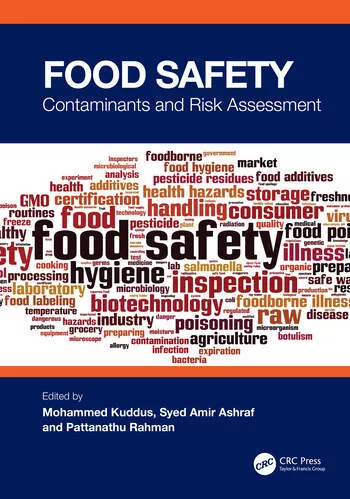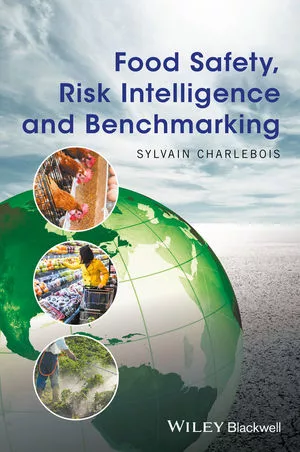EFSA: Poor Hygienic Equipment Design Most Crucial Risk Factor for Persistent Pathogens in Food Production

Image credit: Arno Senoner via Unsplash
The European Food Safety Authority’s Panel on Biological Hazards (EFSA’s BIOHAZ Panel) recently published a scientific opinion that identified the most relevant persistent microorganisms in food and feed production environments to be Salmonella, Listeria monocytogenes, and Cronobacter sakazakii, as well as risk factors and interventions associated with these pathogens. The scientific opinion excluded primary production environments.
In context of the scientific opinion, “microbial persistence” was defined as the ability of a given organism to be established in niches (or harborage sites) within a food or feed production or processing environment (FFPE) over a long term, despite the frequent application of cleaning and disinfection. To be persistent, the microbe requires prolonged existence (spanning months or years), usually with multiplication of the microorganism in the specific FFPE. For its opinion, the BIOHAZ Panel considered the following sectors: feed for food animal production, meat (including slaughterhouses and processing plants), fish and seafood, dairy, egg and egg products, fruit and vegetables (including herbs), and low moisture food (LMF).
The most relevant bacterial food safety hazards were identified as: Salmonella enterica in the feed for food animal production sector, L. monocytogenes and S. enterica in the meat processing sector, L. monocytogenes in the fish and seafood processing sector, L. monocytogenes in the dairy sector, S. enterica in the eggs and egg processing sector, L. monocytogenes in the fruit and vegetables processing sector, and S. enterica and C. sakazakii in the LMF sector. The BIOHAZ Panel also attempted to determine the main genetic features associated with persistence in microorganisms, but no universal markers or features responsible for persistence were identified. The opinion concluded that, although different combinations of genetic determinants linked to increased environmental robustness possibly aids persistence in particular pathogen subtypes, persistence is a multifactorial process that also depends on specific environmental conditions and risk factors.
Regarding environmental risk factors that lead to persistence, the BIOHAZ Panel determined that the main risk factor for persistent Salmonella, L. monoctogenes, and C. sakazakii in FFPE is poor hygienic design of equipment and machinery, which leads to harborage sites that are difficult to clean and disinfect and where food debris and moisture can accumulate. Other important factors include inadequate zoning and hygiene barriers, enabling the spread of pathogens from contaminated to clean areas; inadequate cleaning and disinfection of facilities; introduction of hazards through raw materials, which may lead to the colonization and spread of persistent clones in the processing environment; and humidity, which favors persistence. Risk factors specific to LMF processing environments include airborne transmission through dust; the limited use of disinfectants due to dry cleaning operations; and the presence of water from wet cleaning, condensation generated through temperature gradients within the facility or equipment, or other sources.
The most important interventions for persistent Salmonella, L. monoctogenes, and C. sakazakii in FFPE is a well-designed environmental monitoring program, following a risk-based approach, to identify contamination sources and detect potentially persistent hazards. The confirmation of the presence of a persistent strain and identification of its niche within the facility requires the detailed characterization of isolates through subtyping methods, preferably whole genome sequencing (WGS). Once persistence is suspected in a plant, a “seek-and-destroy” approach has been frequently recommended, which includes intensified monitoring, the introduction of measures to control the event, and continuous monitoring to confirm the efficacy of the measures taken. Alternatively, systematic root cause analyses can be applied to identify the most probable factors/sites within a facility contributing to the problem and to define the most appropriate interventions to eliminate the pathogen from the premises.
Another critical mitigation measure is the establishment of hygienic barriers in the food safety management system (FSMS) during implementation of hazards analysis and critical control points (HACCP). Also important are proper infrastructure, cleaning and disinfection, technical maintenance and calibration, water and air control, employee hygiene and health status, working methodology, and food safety culture. Overall, environmental sampling and testing programs should be robust and intentionally designed by food business operators, and should ensure adequate surveillance of higher-risk niches for target bacterial hazards.
During outbreak investigations, sampling strategies should be optimized and data reporting of official and industrial sampling should be improved, in order to strengthen the link between FFPE and outbreak cases. The BIOHAZ Panel also recommends the use of interoperable standards to collect and report WGS metadata to ensure auditability, streamline data-sharing, and reduce uncertainty. Finally, the opinion recommends open access for WGS data and associated metadata related to the strain isolation, respecting data confidentiality and the interests of different partners in the food chain, for investigating persistence in the FFPE.
Looking for quick answers on food safety topics?
Try Ask FSM, our new smart AI search tool.
Ask FSM →








